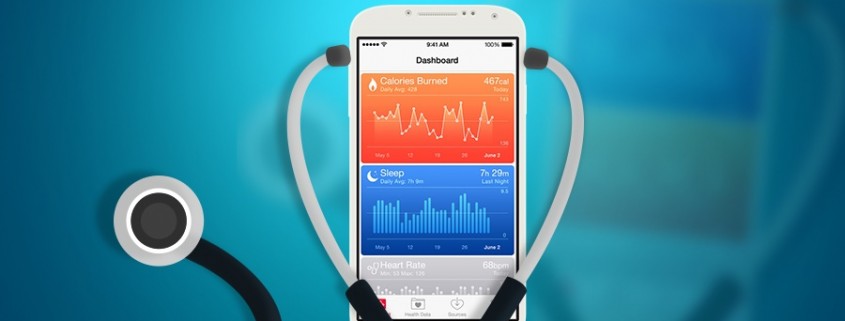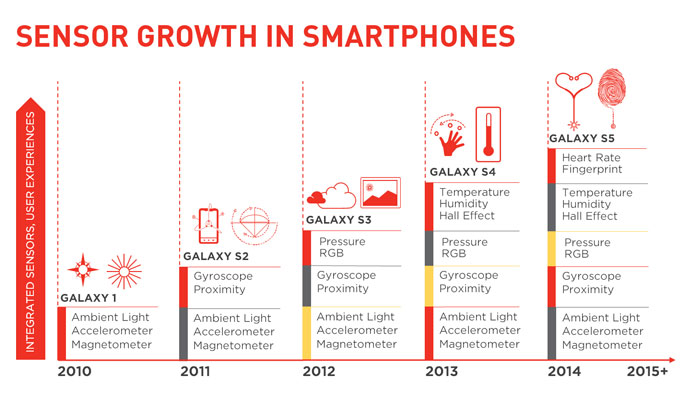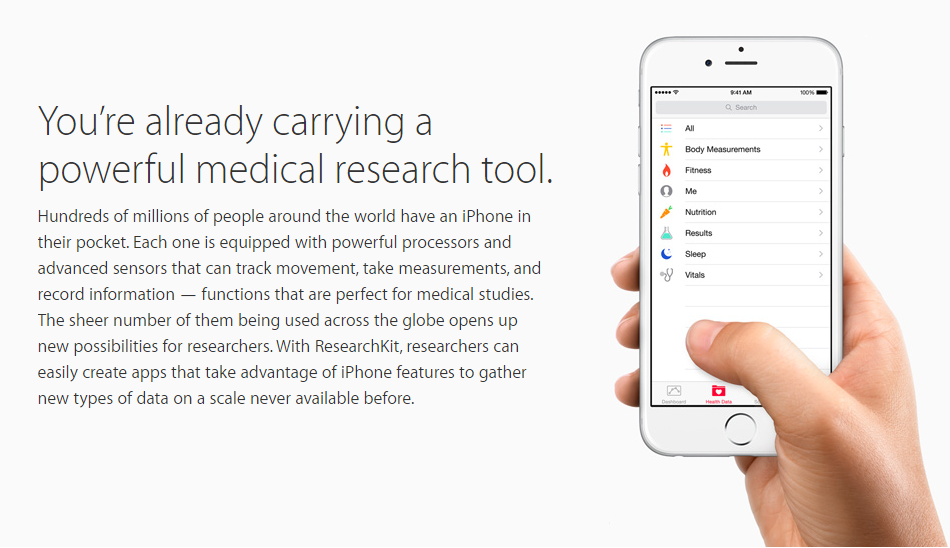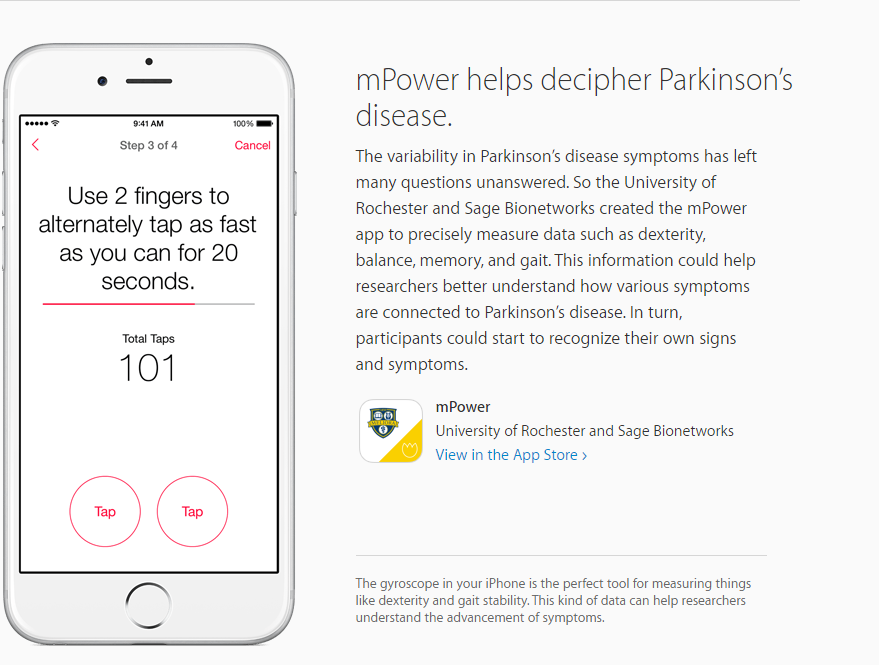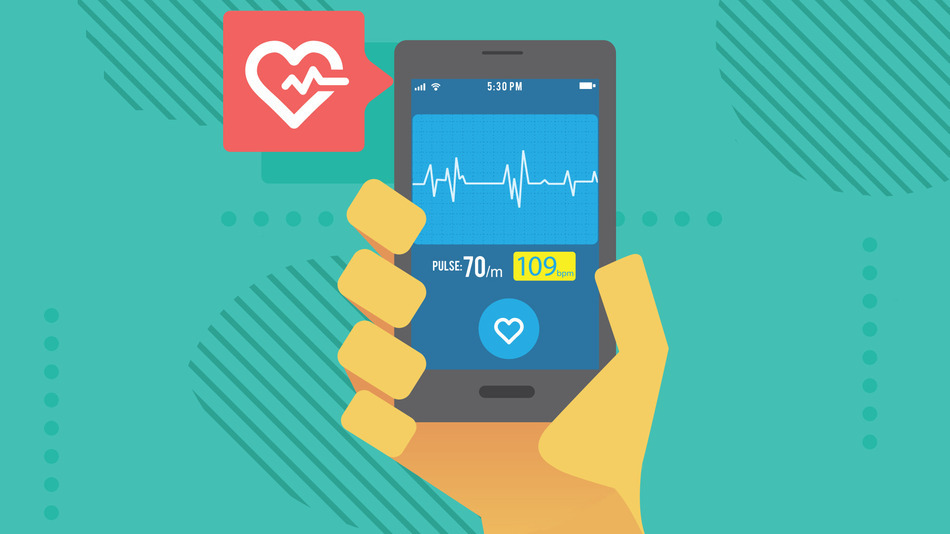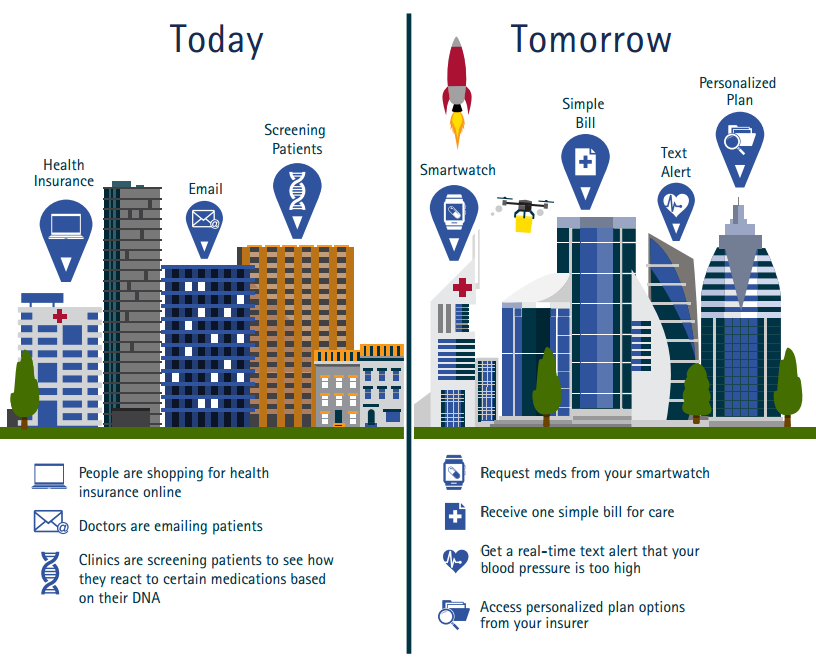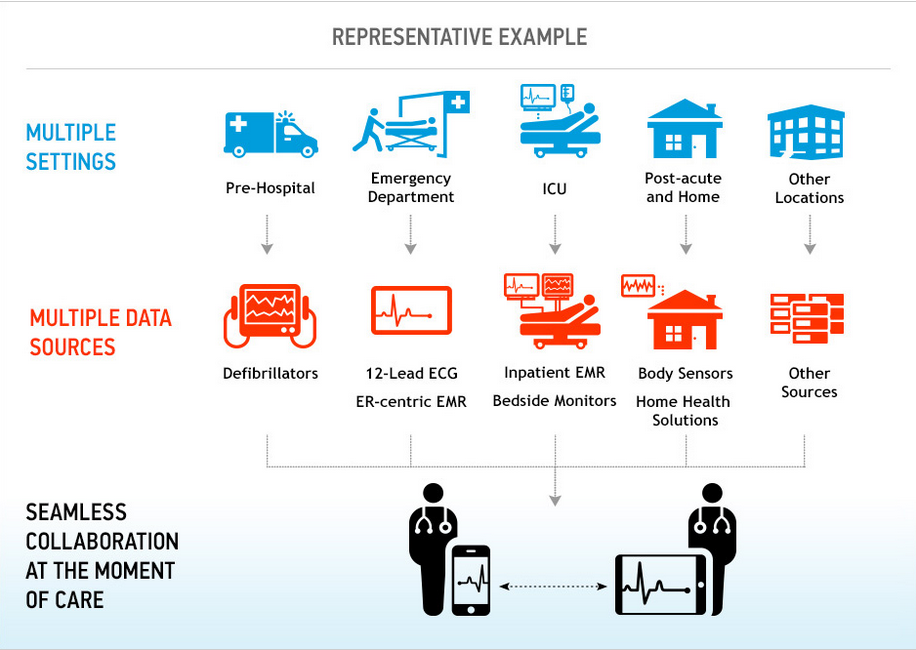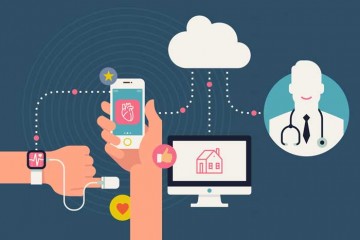Why Mobile HealthTech Is So Much More Than Fitness Apps
“When a technology is free to use, you are not the customer, you are the product.” – Tim Cook, CEO of Apple Inc
Mobile health technology, or mHealth, refers to technology-based applications that allow a patient and a physician to clinically interact from different locations.
Fuelled by smartphone penetration, the rise of ‘mHealth’ is due to the amount of data brands, medical institutions and researchers now have available thanks to health and fitness technology.
The data that you put into your smartphone to track your weight, fitness regime, diet, sleep, pregnancy, menstrual cycle, medication, and more is an absolute goldmine for medical researchers and institutions.
Why not put it to good use?
Machine learning, in which computer algorithms learn to recognise patterns within data, is already common practice among product industries.
Online businesses like Amazon and Netflix use machine learning to gain insights into trends, identify customer preferences, target their ads and generally improve the customer experience.
mHealth startups are starting to apply this type of learning to the healthcare industry.
Hospitals and other medical institutions are increasingly ‘going paperless’ with electronic record keeping, and smartphone users are increasingly tracking their health through apps.
You might not think about it when you use an app like My Fitness Pal or RunKeeper, but every behaviour, action and thought you put into a device has the potential to improve products and services across different industries.
This post will look at the benefits of harnessing this data for medical research, what the future holds for the mHealth industry, and what challenges lie ahead for startups in this booming area.
What you didn’t know you were carrying in your pocket…
Source: Qualcomm
Here are the smartphone sensors that medical researchers care most about:
- Accelerometer – Senses and measures the speed of the object it’s attached to. It also senses gravity, so it can also sense the angle at which it is being held.
- Barometer – Senses air pressure to determine your relative elevation. So as you move, you can keep track of the elevation you’ve gained (ie: stairs climbed or hills conquered).
- Gyroscope – Senses when you’re moving or stationary, measuring dexterity and gait stability.
As well as their independent uses, all these sensors work with each other. For example, the GPS uses the accelerometer to calibrate for your running stride, so the ‘moving dot’ better captures your movement, which is detected by the gyroscope.
These highly sophisticated sensors make your smartphone a powerful medical research tool.
And when you consider that 79% of people aged 18-44 have their smartphones with them 22 hours a day, it’s a pretty reliable one at that.
The benefits of opening up your data to medical researchers
While health and fitness apps have been around ever since the app store launched in 2008, the valuable data inside them has been locked away for years in telecommunication clouds.
In the last 12 months, the big 3 mobile players have launched their answers to the influx of personal health and fitness apps.
- Google – Google Fit
- Apple – Research Kit
- Samsung – Sami
I’m going to focus on Apple’s Research Kit – an open source software framework that gives researchers a platform to access the millions of bits of health data on users’ iPhones.
It allows developers to create health apps that feed bits of your health information into the database for scientific use, and it’s purely consent based.
Apple doesn’t see any of the data you give permission for the apps to use, and users can opt out of sharing data at any time, as well as request that all their previous data be deleted.
Think of it as contributing your body to science, before you actually die.
“Mobile health apps and hardware could hold the key to living better lives, making high-quality care accessible, and even reducing our national debt.” – Tarun Wadhwa
Research Kit was launched with the support of some of the world’s leading medical institutions, who created apps that feed the data into a research database.
These include apps for patients to track their asthma, Parkinson’s disease, diabetes, breast cancer and cardiovascular disease.
See the example below to learn how the University of Rochester created the mPower app to aid its own research into Parkinson’s disease:
Here are some of the top reasons why researchers are so excited about getting their hands on your data:
1. There’s strength in numbers
In most medical studies, a sample size of 10,000 is a large number. The number of smartphone users in the world is expected to surpass 2 billion by 2016.
Even grabbing 1% of the smartphone market’s health data would be a massive boost in sample size, which means a better ability to draw statistically significant conclusions.
Researchers also currently have a diversity problem in studies, which open source health apps would help combat.
The typical enrolment process to participate in medical trials currently has many barriers to entry, which restrict the diversity of participants.
Research subjects need flexible work and family schedules, the ability to understand and navigate legal contracts, and easy transportation to the research center.
For these reasons, most research subjects are affluent, white males.
By reaching out to existing app users via mobile, the enrolment process is faster, more convenient, less intrusive to the participant’s life, and has lower barriers to entry.
Our work with The George Institute for Global Health on the Food Label Trial App in Australia has proven to us that using phone apps to conduct medical/health surveys yield great results partly because it is so much more convenient for the trial participants.
2. More accurate data
Asking people to ‘remember’ their past behaviours is prone to many errors in wishful thinking, which researchers call ‘self-reporting bias’.
For example, when filling in a survey asking “how much do you exercise each week” a participant might say “between 20-30 minutes each day”. These ball park estimates are often inaccurate.
“People tend to overestimate the amount of exercise they get on a regular basis, and underestimate the amount of food they eat.” – Dr. Alan Yeung, medical director at Stanford Cardiovascular Health and an architect of Stanford’s MyHeart Counts app
With the smartphone’s advanced sensors, data can be automatically collected as people go about their day.
Rather than collecting information on a quarterly visit, researchers have access to data that is updated even hourly. So it’s easier to participate, and results are more objective and precise.
This is why wearable tech is the most exciting development in the mHealth app space.
Wearable tech boasts more sophisticated, specialized sensors than smartphones and gives exact numbers, automatically calculates averages and identifies behaviours that the human brain doesn’t have the capacity to recall naturally.
3. Democratizing an ancient industry
Open source data platforms would allow individual research institutions to better collaborate and learn from each other’s data, resulting in more holistic research findings.
On a patient level, by reducing barriers to entry for participating in research, mHealth apps create a more community-minded relationship between the researchers and the participants.
Rather than seeing research as something that’s forced on them, the public would move more toward ‘participatory research’.
Research Kit allows people to easily choose to participate in the studies they care the most about.
With greater adoption, the attitude towards research would shift to one where participants and researchers learn from each other, in two-sided interactions.
Where we’re heading
Source: Mashable
Here are the biggest trends we’re currently seeing in mobile health tech, all using data to pave the way for improvements in the access, efficiency and reliability of health care.
1. Personalized health care
A key benefit that mHealth technology provides is the ability to leverage your unique data to create personalised, tailored health care programs for individuals, rather than the ‘best on average’ solutions physicians currently provide.
Physicians currently have a very reactive approach to a patient’s health.
They do their best to test for health problems once symptoms start to show, and treat them with surgeries and programs based on general demographics like age and family history, which often prove superficial and irrelevant.
PhysIQ is a personalized physiology data analytics platform designed to detect early changes in the body.
It uses the same machine-learning algorithms developed to predict and prevent failure in commercial jet engines, and applies them to the human body.
Wow.
It uses data from multiple devices (like your smartwatch, fit band, glucometer, blood pressure cuff, and various health tracking apps) to create a multivariate baseline of health unique for every patient.
No variable is viewed in isolation, but viewed as an integrated whole, which is more reflective of how the body actually works.
This way, PhysIQ can identify meaningful physiological deviations from your baseline that could indicate a medical event even before symptoms start to appear.
Source: Accenture
This is not “big data.” It’s the opposite…In short, PhysIQ technology compares you to you.
PhysIQ is currently the only platform of its kind, but as more health devices are introduced to the market, made more affordable and more widely adopted, it’s easy to see how personalised healthcare will transform our population-based one.
2. Real-time, collaborative solutions
Health monitoring is already the number 1 reason why 54% of patients use mobile phone apps.
By providing clinicians with real time access to health records from a variety of sources, they’re able to turn the idea of the ‘annual trip to the GP’ on its head.
It would stretch healthcare beyond traditional boundaries by engaging with all parties through mobile apps, self-management services, in-home monitoring and virtual consultations.
AirStrip One is a mobile interoperability platform for medical institutions. Data collection is a totally collaborative process across patients, doctors and separate medical institutions.
AirStrip One eliminates the barriers between people, processes and technologies.
By integrating with the systems from multiple vendors, they’re able to provide a more complete picture of patient health. The example below describes where all this data could come from.
The benefits include faster decision making, better care coordination, avoidance of readmissions, and a LOT of money saved.
Rather than just having access to one slice of the health pie, physicians can provide ongoing medical support and better preventative strategies.
3. Intelligent machines
“We’re never going to replace the judgement of a human. But we can make that judgement better.” – Kaveh Safavi, Global Managing Director of Healthcare Industry
Software must do more than learn and adapt. It must propel discovery and innovation.
The development of enterprise software is a hot area for streamlining the surgeon’s research process and informing them to make better decisions.
Take the example of a cancer patient. When deciding a treatment plan, a doctor need to use all the information they have on that patient’s unique set of circumstances – prior surgeries, existing diseases and allergies.
There is no “one size fits all” treatment plan because every patient is unique, so the doctor needs to use their judgement to make the best decision.
But, what would likely improve the success rate of this treatment plan is if they could easily find out if there are other patients like this patient, who other doctors have seen and treated, and how the patient responded.
Systems that can efficiently collect, organise and review all medical records for a country or even or even internationally would be of enormous benefit to doctors.
The challenges ahead
Source: Mobilehealthtechevent
Slow adoption
As with any revolutionary technology, it takes several years to reach the ‘tipping point’ of consumer adoption.
Despite more than 100,000 healthcare-related smartphone apps available in the marketplace today, a 2012 Pew Research Center study found that only 7% of US adults use apps or other devices to track at least one health indicator (such as weight or cholesterol).
Many independent physicians don’t have the resources to invest in new infrastructure, which is holding back software like PhysIQ and Airstrip from reaching critical mass.
Even the big medical institutions who may have the resources are slow moving and hindered by old bureaucracy. This is holding many of them back from taking the plunge in delivering customers more value for their dollar.
Lack of regulation for data privacy
The amount of health information being collected is huge, and it has grown rapidly.
The data is of course highly sensitive, but regulators are struggling to set clear privacy laws on app development in this area.
mHealth startups are expressing their frustration at the lack of developer-friendly online resources surrounding data privacy rules.
The smaller startups don’t have the resources to hire lawyers and consultants to ensure they are in compliance with the law, like the large vendors do.
Instead, they must rely on government websites, many of which haven’t been updated since before the smartphone was even invented.
“Regulators have not kept pace with the rapid growth of technology that gives users greater access to healthcare providers and more control over their health information”.
Without updated regulation, consumers are at risk of having brands and institutions using their data unethically.
Concern over consumer data security is just another factor holding back the mass adoption of mHealth apps.
No common language
Ida Sim, a professor of medicine at the University of California, describes the main challenge for data collection as finding a universal language for easy sharing.
Currently, wearable tech and healthcare apps organise their data using their own coding languages.
“A Wi-Fi enabled weight scale might represent data as “weight: 88” but we have no clue if that means 88 kg, femptograms, lbs, or stones…These kinds of irregularities slow down the potential of digital health data” – Ida Sim
Data is also stored in silos across the different companies, and therefore isn’t optimised for patients and physicians to combine and view multiple data streams together.
When correlated data like blood pressure can’t be viewed next to data on weight, this leads to an incomplete picture of health for doctors.
Tech entrepreneurs are right to be flocking to the healthcare industry to build the next round of revolutionary apps.
Health and fitness apps, wearable tech and smarter enterprise software hold the key to harnessing the potential of an industry fraught with inefficiencies and waste.
By building apps that provide a benefit to the consumer to track their health in some way, this valuable consumer data can be used to break down the barriers between physicians and patients.
This would allow medical institutions to adopt the same ‘customer-focused’ ideology that businesses already use to remain competitive, and allow patients greater access to health resources.
Where to go next
Graham McCorkill
Latest posts by Graham McCorkill (see all)
- Why digital security should be part of every business strategy - April 18, 2017
- How to use Mobile to Disrupt Your Recruitment Game - January 27, 2017
- The 3 Step Loop For Delivering Apps On Time And On Budget - November 11, 2016

